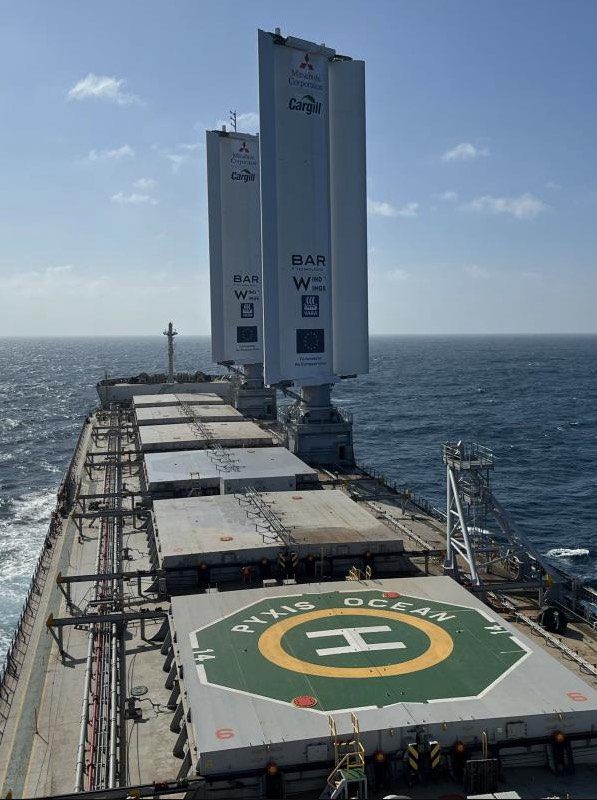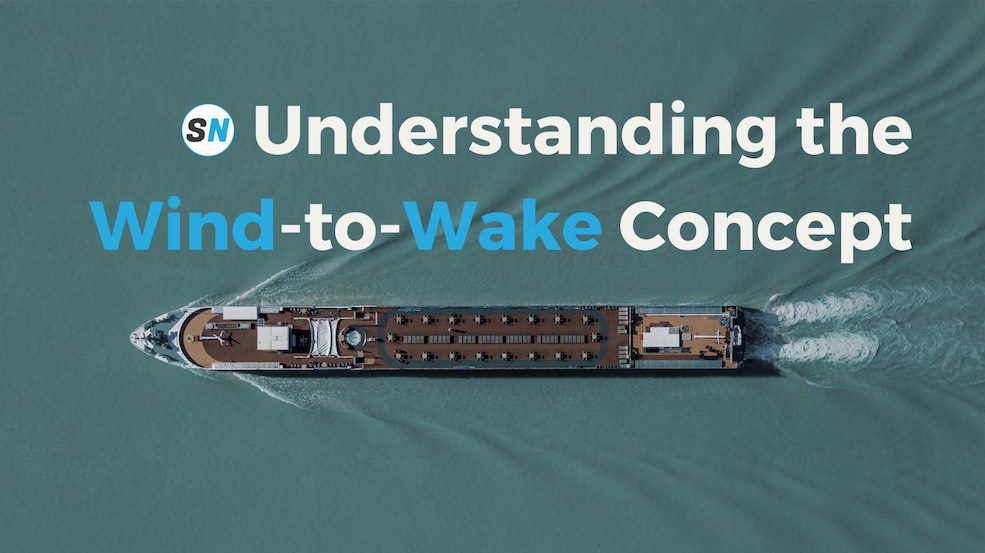28 November 2024
DNV Confirms Wing Propulsion Vessel with 32% Energy-Saving

DNV validated that when sailing in favourable conditions, the BAR Technologies’ Wing propulsion installed on a case vessel reduced energy consumption of the main engine by 32% per NM.
Table of Contents
Wing Propulsion Vessel
When sailing in favourable conditions, the BAR Technologies’ Wing propulsion installed on the MV Pyxis Ocean reduced energy consumption of the main engine by 32% per nautical mile, DNV found in an interim report.
The Kamsarmax bulk carrier under the management of MC Shipping Singapore Branch and chartered by Cargill is said to be the world’s first ship to be equipped with BAR Technologies’ Wing propulsion technology.
It embarked on open waters in August 2023. During the wing propulsion testing, between August 2023 and March 2024, the vessel traversed the Indian Ocean, Pacific Ocean, North and South Atlantic, and navigated Cape Horn and the Cape of Good Hope.
So far, the ship has visited six ports completing 8 successful loading and unloading operations.

Views
“Innovative Wind Assisted Propulsion Systems (WAPS) like WindWings® offer owners and operators new ways of saving energy and accelerating the decarbonization of the maritime industry. At DNV we’re continually working to build trust in these new solutions and the best way to do that is to provide transparent, 3rd party, verified, insights into the real-world performance of these systems. This is why we’re so pleased to be working with future focussed companies like MC Shipping, Cargill, and BAR Technologies, to expand the industry knowledge base on WAPS. We look forward to building on this cooperation in the future,”
Johanna Tranell, WAPS responsible, DNV Maritime Advisory
“The confirmation from DNV that WindWings are producing significant savings is a testament to the collective work of all involved and our efforts in advancing maritime fuel efficiency. This work underpins our strong commitment to integrating low carbon technologies to contribute to decarbonization in the maritime industry,”
Karmesh Kumar Tiwari, Deputy Branch General Manager, MC Shipping Singapore Branch
“Validation of the performance of the Pyxis Ocean against BAR’s simulation models has been one of our main goals from the outset of this project. Having DNV involved to provide an independent perspective is an important step in that process, and this latest data builds upon the results that we shared earlier,”
Chris Hughes, Decarbonisation Specialist, Cargill
Claim from the Maker
As reported in March, according to BAR Technologies’ evaluation of the data, energy savings from all tested conditions support the company’s initial projections: average fuel savings of 1.5 tonnes, which is a reduction of over 5T CO2 emissions “well-to-wake”, per wing propulsion unit per day, across all global routes and seasons.

Wind-to-Wake Concept for Shipping Decarbonization
Shipping decarbonization goes beyond the norm. Get up to speed with Wind-to-Wake, the updated method of lifecycle assessment for green fuels.
Ship Nerd
These savings, combined with the global operations of Pyxis Ocean, highlight the Wing propulsion versatility and effectiveness in real-world scenarios. In the future, Kamsarmax bulk carrier vessels, like the Pyxis Ocean, could carry three wings, further increasing fuel savings and emissions reductions.
“It’s been a privilege to have the performance of our WindWings thoroughly assessed by DNV, who have been rigorous in their approach to assessing the data and applying impartial standards to the results. The independent confirmation that WindWings are producing significant savings grants huge credibility to the technology. Together with our performance guarantee – offered with all WindWings – this gives our customers the reassurance they need,”
John Cooper, CEO of BAR Technologies
The Wing Propulsion system harnesses wind power to propel a ship forward, reducing the reliance on engines and fuel consumption. Controlled by a touch panel on the bridge, a simple traffic light system guides the crew in raising or lowering the wings. Once raised, the wings automatically adjust to the optimal configuration based on real-time wind measurements.
Source: DNV
See Also
Netherlands-based stainless steel chemicals tanker owner, Chemship, has commissioned the upgraded 2015-built Chemical Challenger, the first ship in its fleet to have a wind sail retrofit.
The 16,111 DWT wind-assisted tanker now has four 16-meter-high aluminum Ventofoils from Econowind, creating a direct wind surface of 180 sq meters.
Turbo-sail technology multiplies this by a factor of five, raising the total wind surface to the equivalent of 900 sq meters, the company explained. It expects to achieve fuel savings and emission reductions of 10%.
The wind-assisted vessel will operate on Chemship’s trans-Atlantic trade between the east coast of the US and the Mediterranean. Westerly winds typically prevail on this route.

World’s First Wind Assisted Tanker – 10% Emission Reductions
Chemship, has commissioned the wind-assisted upgraded 2015-built Chemical Challenger, the first tanker to have a wind sail retrofit.


